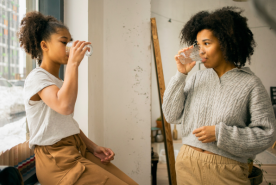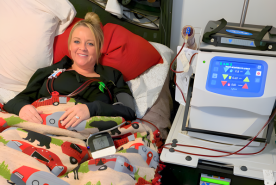Prevention, daily life, and wellbeing Health systems, social systems, and environmental factors Treatments and therapies Mental health and wellness Dialysis patients' bill of rights and responsibilities Dialysis Coping and self-care Hemodialysis
October 17, 2017
By Brenda Thompson, Social Worker at Satellite Healthcare Round Rock in Texas
For patients on dialysis, there are so many rules. Rules about food choices, rules for medications, rules to help with cleanliness. And even when it comes to getting dressed, there are “rules” when dressing for your access.
They aren’t strict, but they are important. It mostly means wearing clothes that make it easy for your tech or care partner to reach your access and make sure that your dialysis is not interrupted by a loss of connection. To avoid infection, you also have make sure you keep your access clean. Clothing choices play a big role in that, too. For example, when dialyzing, avoid wearing tight or constraining fabrics near your access area such as spandex.
That all can sometimes get in the way of wearing something comfortable, cute and fashionable. During treatment, sometimes comfort is the most important part of being at the center. We all know how cold it can feel when dialyzing!
There are ways to make sure your access is clear while still staying comfortable! Some ideas for creative clothing are:
- Arm-length cotton or wool gloves
- Fleece fabric (you’ll need some sewing skills for this)
- Cotton leggings with enough stretch
But what about your everyday clothing, when you’re not dialyzing?
You have a lot more options when you’re not dialyzing. But you still need to follow some rules. You can wear what makes you comfortable, as long as you don’t wear anything that would restrict blood flow on your access arm. Again, keeping your access clean is another reminder when choosing your outfit for the day
If you have any questions about materials, sleeves or shirts, talk to your doctor, nurse, tech or social worker. They will all want to work with you to find a comfortable (and fashionable!) solution.
Brenda Thompson is a Social Worker for Satellite Healthcare at the center in Round Rock, Texas. She loves making things from crocheting to doll house furniture. Her joy is caring for patients, making them laugh and smile. She says, “I feel it helps them to come through the doors.”


















